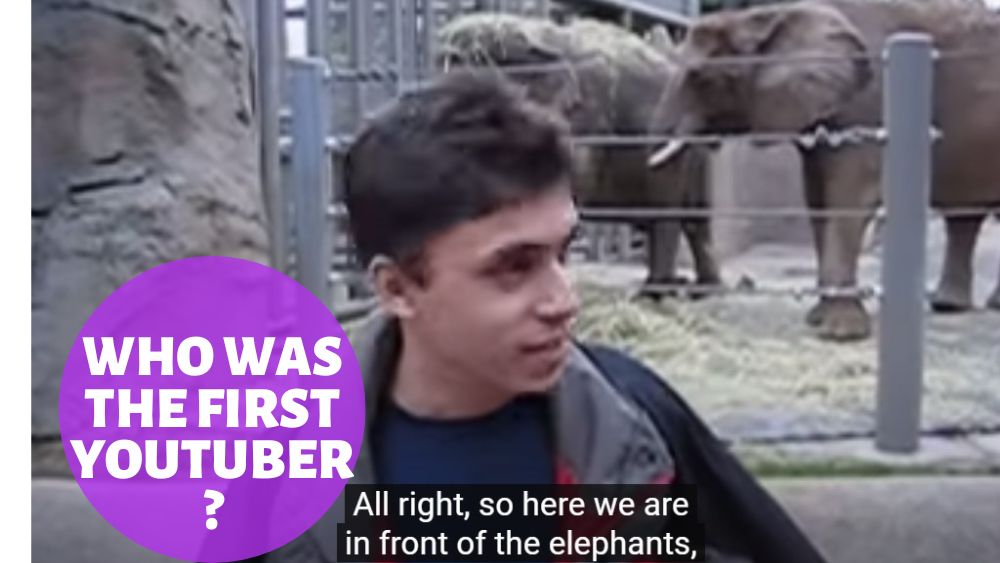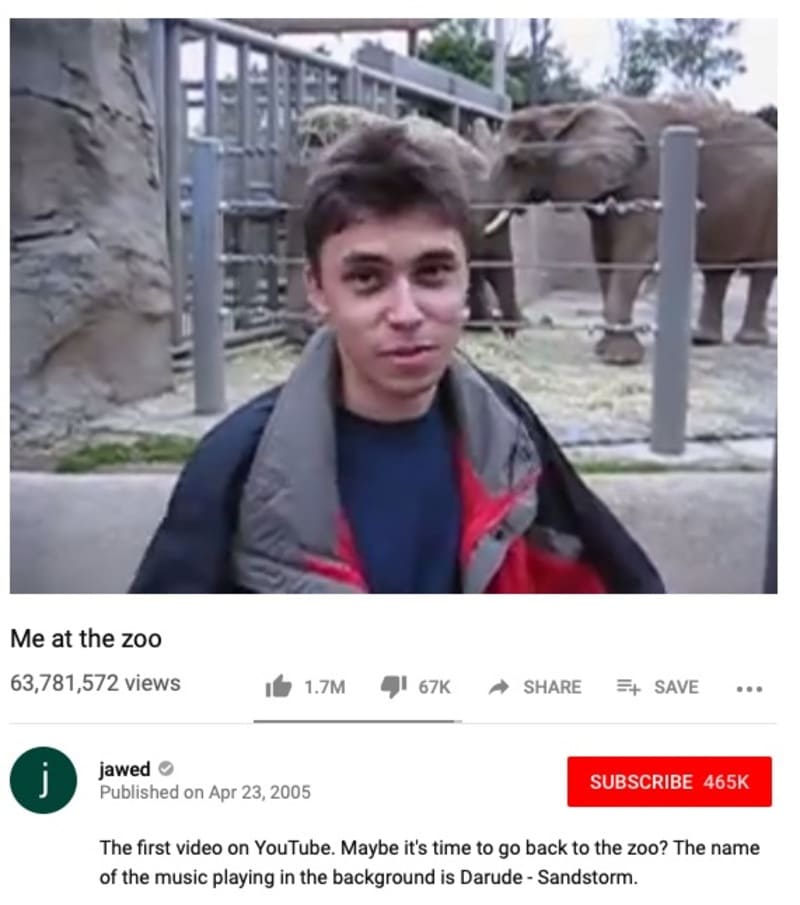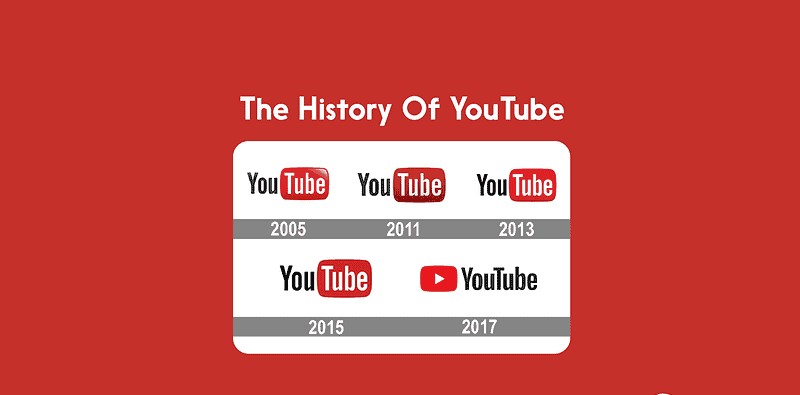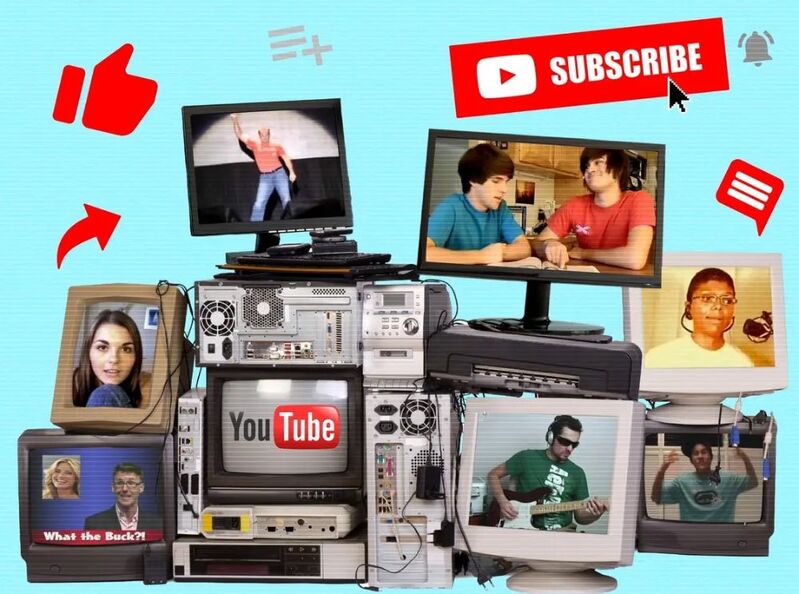Who Was the First YouTuber? Leading Person Makes Video

With over 2 billion active monthly users since its launch in 2005, YouTube has become one of the most popular websites online. It is difficult to picture a world without YouTube, a website where users may post and share videos on virtually any subject imaginable. Have you ever wondered who was the first YouTuber to make a YouTube video in the world?
In this article, we will take you on a journey to explore YouTube’s history, unveiling the story behind the first video, the founding team, the original purpose, and the platform’s explosive growth in its early years. Join us to discover the evolution of YouTube and how it has forever transformed the world of entertainment!
Who Was the First YouTuber in The World?
YouTube has become a wildly popular entertainment platform, but have you ever wondered who was the first YouTuber, the first person who kickstarted the trend of using this video-watching app? – The answer is Jawed Karim, one of YouTube’s co-founders. Born in 1979 in Merseburg, East Germany, Karim later moved to the United States, where he studied computer science at the University of Illinois at Urbana-Champaign and later pursued a master’s degree at Stanford University.
While working at PayPal, Karim met Steve Chen and Chad Hurley, his future co-founders of YouTube. The trio launched the video-sharing website in 2005, aiming to make it easier for people to upload and share videos online. On April 23, 2005, Karim uploaded “Me at the zoo,” a short 18-second clip filmed at the San Diego Zoo. This unassuming video made history as the first ever uploaded to YouTube.
Although Karim took a more low-profile role in the company compared to his co-founders, his contribution was foundational. His simple video marked the beginning of what would become the world’s largest video platform,m forever changing how people create, share, and consume content online.
Today, “Me at the zoo” stands as a cultural artifact, symbolizing the birth of a digital revolution and cementing Jawed Karim’s place in internet history.

Who was the first Youtuber
The Early Days of YouTube
YouTube was a small, specialized platform with little exposure outside of Silicon Valley when it originally debuted in 2005. However, when more individuals became aware of the site’s possibilities, it swiftly surged in popularity. YouTube had over 20 million visitors by the end of the year after receiving millions of views each day during its early months of operation.
As more and more users started uploading films to the website, its popularity grew over the following few years. Initially, the majority of YouTube videos were uncomplicated, poor-quality snapshots taken with smartphones or digital cameras. But when more individuals started visiting the website, the videos’ quality went up and more expert information started to appear.
The Evolution of YouTube
YouTube has transformed from a fledgling video-sharing platform into a cultural juggernaut, captivating over 2 billion active users and generating more than 1 billion monthly video views. Its journey is a testament to innovation, creativity, and the power of digital connectivity. Below is a vibrant snapshot of YouTube’s remarkable evolution:
- February 2005: Born as a visionary video-based dating service, YouTube was founded by Steve Chen, Chad Hurley, and Jawed Karim, with a mission to make video sharing accessible to all.
- April 2005: The first spark ignited when Jawed Karim uploaded “Me at the Zoo,” a 19-second clip that marked YouTube’s debut and laid the foundation for a global platform.
- November 2006: YouTube’s potential caught the eye of tech giant Google, which acquired the platform for a staggering $1.65 billion, fueling its rapid expansion.
- May 2007: The YouTube Partnership Program launched, empowering creators to monetize their content through advertising, turning passion into a profession.
- November 2008: Embracing the demand for high-quality visuals, YouTube introduced support for HD video, enhancing the viewing experience.
- 2012: YouTube went mobile, launching its app to bring videos to smartphones, making content accessible anytime, anywhere.
- 2015: A dual leap forward—YouTube invested in original content to rival traditional media and unveiled YouTube Red (now YouTube Premium), offering an ad-free subscription experience.
- 2017: YouTube expanded into live television with YouTube TV, blending streaming with traditional broadcast for a modern audience.
- 2020: Responding to the rise of short-form content, YouTube introduced Shorts, a platform for bite-sized vertical videos, competing head-on with TikTok.
Today, YouTube stands as a global stage where creators, from gamers to educators, shape culture and connect with billions. Its evolution reflects a relentless drive to innovate, making it an indispensable part of the digital age.

The History Of YouTube
Read More: Top 12 Most Hated YouTubers: The Dark Side of Fame
YouTube’s Impact on Pop Culture
YouTube has transformed not only how we consume content but also who creates it. Many YouTubers have risen to fame and become cultural icons, blurring the line between internet personalities and mainstream celebrities.
Gone are the days of waiting for scheduled TV broadcasts. YouTube introduced a new era of on-demand viewing, allowing audiences to watch what they want, whenever they want. This shift has fueled the rise of binge-watching – a now-common habit of consuming multiple episodes or videos in one sitting.
More importantly, YouTube has democratized entertainment. Unlike traditional media, which often requires large budgets and production crews, YouTube empowers individuals to create content with nothing more than a camera and an idea. This freedom has given birth to entirely new genres vlogs, unboxings, reaction videos, commentary channels, and more all of which reflect the creativity and diversity of the online world.
In short, YouTube didn’t just change media, it gave it a new voice.

YouTube’s Early Creators Aided the Platform’s Success
The Future of YouTube
It is obvious that YouTube will continue to have a big influence on the media landscape as the platform develops. We can anticipate the following modifications, among others, in the future:
- More individualized content: YouTube has already started offering users customized suggestions based on their viewing preferences. We might predict that this tendency will persist, with more content catered to certain users’ preferences.
- More interaction: YouTube has already implemented services that let people communicate with content producers in real time, like live streaming and community posts. More interactive features, such polls and quizzes, are likely to be added in the future.
- More expert content: As YouTube expands, we may anticipate more expert content producers using the site. This might include indie filmmakers and artists as well as established media companies aiming to engage a younger audience.
Related: Is YouTube Social Media? How It Changed the Way We Connect
Conclusion
So the next time you watch a YouTube video, consider the history of the platform—and ask yourself: who was the first YouTuber? The answer is Jawed Karim, whose 18-second clip “Me at the zoo” revolutionized society. Even though Jawed Karim might not have intended for “Me at the zoo” to become the first YouTube video, it nonetheless had a significant role in the development of the site. It symbolizes the modest beginnings of a platform that later developed into a sensation in popular culture.
YouTube has expanded to rank among the most popular websites on the internet since Karim posted the first video there. In addition to changing the way we consume media, it has also given rise to new celebrity types and content categories.
It is obvious that YouTube’s influence on the media landscape will only grow as it develops. You cannot ignore YouTube, no of whether you are a content provider or only a viewer. TubeLoop would like to thank you for reading our article.
I am Eric Mason, the founder of TubeLoop.io and I have extensive experience with digital marketing and media. I have employed my expertise to launch a multitude of successful online businesses, ranging across a variety of industries. I also enjoy tackling startups, taking calculated risks and taking advantage of opportunities – I believe these attributes act as catalysts for success within any industry. I look forward to continuing my journey toward success with TubeLoop.io makes it possible for people to watch youtube videos over and over again, it is something I am passionate about and I’m excited to see what the future holds.


![Do you get a play button for 1000 subscribers on Youtube? [Full Guide 2025]](https://tubeloop.io/wp-content/uploads/2024/02/do-you-get-a-play-button-for-1000-subscribers-on-youtube-1024x538.jpg)
